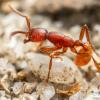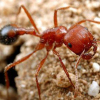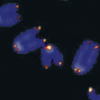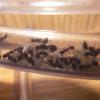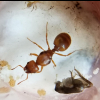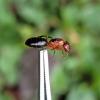Tapinoma sessile was fist described by Say in 1836 and is an endemic of North America, it has a range from the Yucatan up along the Eastern US into Canada (Nova Scotia, New Brunswick) then across the Mississippi and the US-Canadian Great Plains, the Rocky Mountains across to the West Coast down the Baja Coast to up to British Columbia. It is a "nuisance" pest, not a medical pest or crop pest. Approximately 25% of all pest control "ant calls" across the Continental USA in structures are T. sessile. I am looking to see if it is one monolithic trans-continental species or is a population of more than one species, externally almost indistinguishable yet genetically different enough to be considered separate species, that is what "crypsis" is, as I used it in my initial post thread. Mitochondrial DNA is matrilineally transmitted, i.e., it comes only via the mother because mitochondria are found externally to the nucleus (nuclear DNA most of us are familiar with in basic high school biology) in the cytoplasm and thus is passed through cytoplasm as egg cells divide, and unlike nuclear DNA has a more rapid mutation rate so is good, relatively speaking, in doing initial population studies to show divergences and possible speciation and in the past two decades Mitochondrial DNA has been a go to. There has been only one confirmed introduction of this ant outside it's native range, the big island of Hawaii. There was a report of it being introduced into three east coastal provinces of mainland China and Taiwan but these are not substantiated to date. Unfortunately the fact is often times Chinese research is a bit unreliable. This is an academic fact not a prejudice on my part. It has what are known as invasive sydrome phenotypic plasticities and thus has the potential of becoming a global invasive, but to date that has not happened. This means it can easily adjust itself to new environments and successfully establish as a dominant species, even in its own native range, especially in urban areas where competition with other endemic ants has been mitigated due to their inability to adapt to anthropogenically altered urban spaces.
Thanks for the read!
Edited by PurdueEntomology, September 15 2020 - 3:06 PM.


